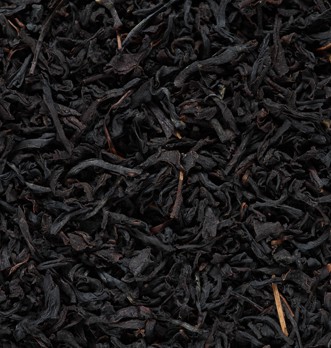
Caught between two legends, smoked black tea has established itself in gastronomy. From the selection of its leaves to its oxidation in pine smoke, its production is written like a musical score. Its flavor notes make it legendary. Dive into the discovery of this luxurious and intriguing tea.
- The legends of smoked black tea
- The culture of Lapsang Souchong
- The production of smoked black teas
- The flavor pairings of Lapsang Souchong
- The art of preparing smoked black tea
- Discovering black teas with Lapsang Souchong
The legends of smoked black tea
Two legends tell the supposed origin of smoked black tea. Both begin in China.
According to the first legend, the history of smoked tea is linked to a delivery problem. Indeed, producers from China were very late for their black tea delivery to England. So they decided to speed up the process by drying the leaves in wood smoke.
In the second legend, the creation of Lapsang Souchong was accidental. It was workers who, after being attacked, tried to save their production of tea leaves by drying them over a wood fire.
Whatever the case, Lapsang Souchong has been a renowned luxury tea worldwide for several centuries.
The culture of Lapsang Souchong
Originally, the tea leaves used as the base for making smoked black tea were cultivated in China, in the Fujian province. More precisely, they grew near the Wuyi mountains.
Today, the success of this organic tea is such that it is cultivated in other parts of China. There are also productions in Taiwan.
The production of smoked black teas
Smoked black tea is produced according to a strict procedure. While there are varieties with spruce or cypress aromas, it's pine wood that is used in the traditional recipe.
The large leaves located at the bottom of the tea plant are used for the production of Lapsang Souchong. They are then dried, rolled, and placed in bamboo baskets. At this stage, the baskets are placed under a pine fire. For 8 to 10 hours, the tea leaves will lose 95% of their water and take on a "smoky" aroma.
The flavor pairings of Lapsang Souchong
The taste of Lapsang Souchong infusion is characteristic. Its smoky aroma pairs well with savory dishes like fish or red meats. Smoked tea is also used as a flavoring note in purees or soups. It then perfumes the dish with a "smoky" flavor of wood fire.
Low in theine, Lapsang Souchong can be consumed throughout the day. This "healthy" infusion can be enjoyed plain or blended with spices or rooibos.
The art of preparing smoked black tea
Like all flavored black teas, Lapsang Souchong needs hot, not boiling water to develop all its aromas. In loose form, it unfolds a larger range of flavors than in tea bags. However, an airtight container is necessary to keep the smoky aromas. Half a teaspoon of tea (equivalent to one tea bag) is sufficient for a cup.
Discovering black teas with Lapsang Souchong
Smoked black tea is a quality beverage. It explores unexpected paths with the marriage of bitterness and spruce-scented notes. As this black tea has nothing in common with traditional Darjeeling, Ceylon, or Assam, it provides an original approach to the world of tea.